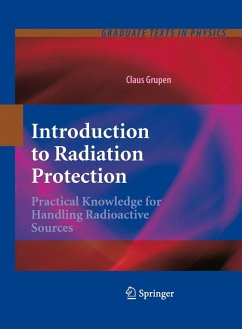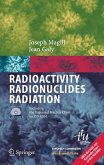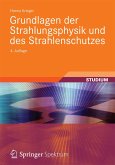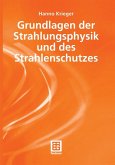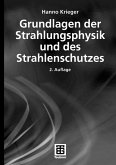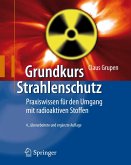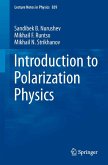The book presents an accessible account of the sources of ionising radiation and the methods of radiation protection. The basics of nuclear physics which are directly related to radiation protection are briefly discussed. The book describes the units of radiation protection, the measurement techniques, biological effects of radiation, environmental radiation, and many applications of radiation. For each chapter there is a problem section with full solutions. A detailed glossary and many useful information in appendixes complete the book. The author has addressed the issue of internationality to make sure that the text and, in particular, the complicated regulations can be easily interpreted not only in Europe and the United States but also in other countries. The subject of radiation protection requires a certain amount of mathematics. For those who have forgotten the basic rules of calculus a short refresher course in the form of a mathematical appendix is added.
Dieser Download kann aus rechtlichen Gründen nur mit Rechnungsadresse in A, B, BG, CY, CZ, D, DK, EW, E, FIN, F, GR, HR, H, IRL, I, LT, L, LR, M, NL, PL, P, R, S, SLO, SK ausgeliefert werden.
From the reviews:
"An Introduction to Radiation Protection aims to provide the reader with a useful reference tool for all areas of radiation protection, from introductory concepts including standard units and basic nuclear physics to the more specific techniques for selecting instrumentation and practical safety measures. ... features useful diagrams, which are used well to explain particular concepts, light hearted cartoon sketches drawn by the author also feature throughout the text. ... Overall the book would prove a useful addition to a radiation-safety professional's bookshelf ... ." (Steve Pritchard, CERN Courier, Vol. 50 (9), November, 2010)
Aus den Rezensionen:
"... Das ... Buch enthält ein besonders ausführliches Stichwortverzeichnis, ein reichhaltiges Glossar, eine kurze mathematische Einführung, Tabellen und viele Rechenbeispiele mit Lösungen ... Hier liegen die großen Stärken des Buchs. ... Dies liegt auch daran, dass es durch die Skizzen des Autors und dieZitate zu Beginn jeden Kapitels ausgesprochen kurzweilig zu lesen ist ... Wer den Menschen vor ionisierender Strahlung schützen will, muss Erkenntnisse aus verschiedensten wissenschaftlichen Disziplinen berücksichtigen. Claus Grupen hat dies in seinem Buch ausführlich getan ..." (Werner Rühm, in: Physik Journal, 2011, Vol. 10, Issue 5, S. 50)
"An Introduction to Radiation Protection aims to provide the reader with a useful reference tool for all areas of radiation protection, from introductory concepts including standard units and basic nuclear physics to the more specific techniques for selecting instrumentation and practical safety measures. ... features useful diagrams, which are used well to explain particular concepts, light hearted cartoon sketches drawn by the author also feature throughout the text. ... Overall the book would prove a useful addition to a radiation-safety professional's bookshelf ... ." (Steve Pritchard, CERN Courier, Vol. 50 (9), November, 2010)
Aus den Rezensionen:
"... Das ... Buch enthält ein besonders ausführliches Stichwortverzeichnis, ein reichhaltiges Glossar, eine kurze mathematische Einführung, Tabellen und viele Rechenbeispiele mit Lösungen ... Hier liegen die großen Stärken des Buchs. ... Dies liegt auch daran, dass es durch die Skizzen des Autors und dieZitate zu Beginn jeden Kapitels ausgesprochen kurzweilig zu lesen ist ... Wer den Menschen vor ionisierender Strahlung schützen will, muss Erkenntnisse aus verschiedensten wissenschaftlichen Disziplinen berücksichtigen. Claus Grupen hat dies in seinem Buch ausführlich getan ..." (Werner Rühm, in: Physik Journal, 2011, Vol. 10, Issue 5, S. 50)

